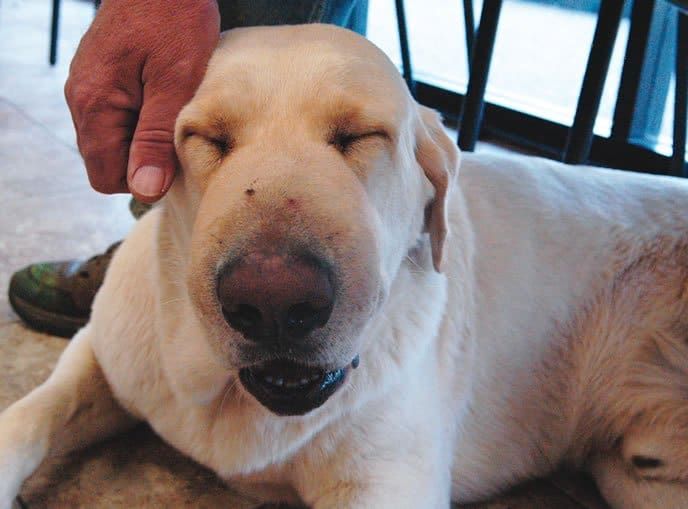Snakes and dogs are a bad combination in any circumstances, but it’s helpful to know what venomous snakes look like, both where you live and where you might be traveling.
All of North America’s pit vipers (Copperheads, Cottonmouths, and rattlesnakes) have a broad, triangular head and narrow neck. Their eyes are slanted, not round, and their bodies tend to be thick and stocky, not slender. Their mouths can open wide with formidable looking fangs. The “pits” for which these vipers are named are heat-sensing hollow areas between the eyes and nostrils.
Most (though not all) rattlesnakes have rattles, and their sound is a distinctive buzzing. Want to hear it? Search online for “rattlesnake sounds” and you’ll find dozens of examples.
The rattles are actually modified scales with a bony core. Each time a rattlesnake sheds its skin, a new “button” is added to the rattle. As a result, rattles show the number of times the animal has shed its skin. Most rattlesnakes shed their skin three to five times per year, and some even more often, depending on their health and growth rate.
One or two puncture wounds, acute swelling, bleeding, and pain are the most common signs of rattlesnake bites. Dogs investigate the world with their noses, so it’s no surprise that their faces are the most common target. Of 67 canine patients treated between 1994 and 2005 at the UC Davis Veterinary Medical Teaching Hospital, all were bitten on the face or legs. (During that same period the hospital treated 5 cats, 3 llamas, 15 horses, 1 sheep, 1 goat, and 1 parrot for rattlesnake bites.)
Related Articles
How to Prevent or Treat Bites from Poisonous Snakes Snake Avoidance Training for Dogs Appreciating Rattlesnakes Why Are The Effects Of Snake Venom So Varied? A Snake-Bite Survival Story






